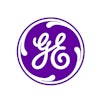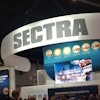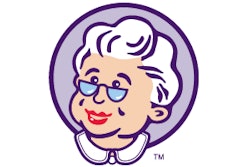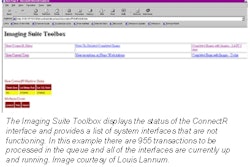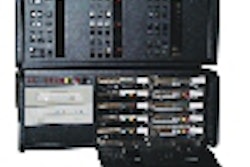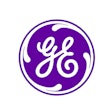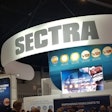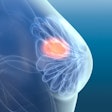SALT LAKE CITY - Overall, PACS reduces the costs associated with the operation of radiology departments. Its introduction into a facility can end consumable spending on film and processor chemicals, free up valuable real estate taken up by film libraries, and increase radiologist productivity. However, with new equipment comes the demanding task of quality control (QC) and maintenance.
As film is phased out of an institution, the role of the high-resolution diagnostic monitor becomes increasingly important. However, the reliability of this crucial PACS component, at least at one institution, leaves a lot to be desired.
In a SCAR presentation Thursday, Lt. Amanda Anderson presented the results of quality-control testing on high-resolution diagnostic monitors at the Naval Medical Center in Portsmouth, VA.
Anderson and a group of fellow medical physicists at the Naval Medical Center began acceptance testing on high- (2K x 2.5K-pixel-) and medium- (1.2K x 1.6-pixel-) resolution monitors in June 2000. Although image quality on all the monitors (43 high-resolution and 86 medium-resolution displays) was found to be acceptable during initial acceptance testing, the clinical utilization determination (CUD) process revealed completely different results.
Due to ongoing contract negotiations, Anderson declined to reveal the identities of the monitor manufacturers, but she did state that two different manufacturers' products were installed at her facility.
High-res blues
Within six weeks of the acceptance of the high-resolution monitors into the facility, 83% displayed visual defocusing. The Naval Medical Center returned all the units to the vendor and replaced them with high-resolution monitors from a second vendor.
Anderson and her team calibrated the monitors using VeriLum software (Image Smiths, Germantown, MD) to tolerances agreed on by the facility. The new monitors were checked three times a week, and the physicists began to note that a number of the monitors had returned to factory-preset levels that were not in calibration with facility standards.
After repeated contacts with the vendor, the group was told that an E-prom chip in the monitor would store configuration settings only from the manufacturer’s proprietary software. Anderson said the limitation resulted in 79 recalibrations of the high-resolution monitors, 87% of which were due to the E-prom chip returning the monitors to factory presets.
The medium-resolution monitors had their own set of issues. In addition to a dozen of the monitors displaying defocusing, six could not be calibrated within brightness limits. Researchers viewing one particularly troublesome monitor, displaying the Society of Motion Picture and Television Engineers (SMPTE) test pattern, couldn't distinguish a 5% square from the 0% adjacent area.
Video-card toasters
The video cards that drive the monitors have presented Anderson and her colleagues with a unique set of challenges. Due to their configuration within the hardware, the cards generate enough heat to "pop" out of their slot in the case.
"There will be a pattern of wavy lines on the monitor before the card pops out. So, when we see it, we shut the machine down for the night," Anderson said.
Other solutions to the popping video cards include gently shaking the unit to reseat the card and reconfiguring the Peripheral Component Interconnect (PCI) slots. The video card manufacturer has reportedly attempted to isolate the cards in a separate housing with separate fans.
The Naval Medical Center has installed a few of these units in the past couple weeks. However, Anderson said they’re still receiving reports of the cards popping out of slots in the new units.
A new QC challenge
Anderson said monitors are currently the weakest link in the PACS network at her facility. Even without all the setbacks the group has experienced over the past year, ongoing monitor QC is a labor-intensive task.
"As medical physicists, our task load has increased with the adoption of PACS in our facility. We still have the QC tasks associated with ‘traditional’ radiology, as well as the new PACS equipment. A monitor takes 20 minutes to calibrate, and there are more than 120 monitors in the department," Anderson noted.
Even a simple SMPTE check, which the American College of Radiology recommends be conducted on a daily basis, takes five minutes to perform. On the basis of her facility’s experience, Anderson strongly encourages medical physicists to conduct weekly QC checks on all high-resolution diagnostic monitors, as well as the medium-resolution review stations.
By Jonathan S. Batchelor
AuntMinnie.com staff writer
May 4, 2001
To view the rest of AuntMinnie's coverage of the SCAR meeting, just go to our RADCast@SCAR 2001 at http://scar.auntminnie.com.
Related Reading
Data-Ray debuts 3-megapixel flat-panel display, March 29, 2001
Dome unveils five-megapixel flat-panel display, November 30, 2000
Image Systems to show new monitors at RSNA, November 20, 2000
In digital radiology, QA means never having to say you're sorry, September 19, 2000
Dome adds to calibration unit, April 12, 2000
Click here to post your comments about this story in our PACS Digital Community. Please include the headline of the article in your message.
Copyright © 2001 AuntMinnie.com

